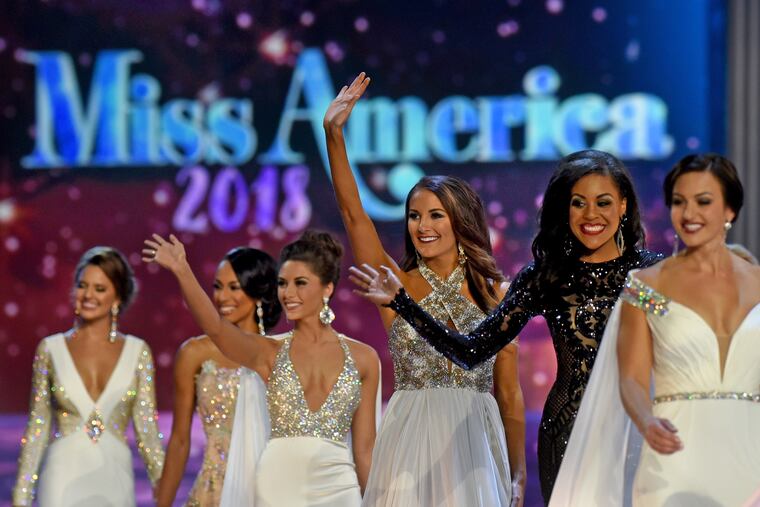Miss America has a history of evolution. Nixing swimsuits is just the latest step forward | Opinion
Such a progressive stance is to be lauded and applauded.

After months of intense controversy plaguing the Miss America Organization (MAO), Gretchen Carlson, Miss America 1989 and chairman of MAO, announced last week that the pageant will cease judging contestants on their physical appearance.
While this change is groundbreaking, the fact is that pageant has grappled with this issue before. During the 1995 pageant, officials invited viewers to phone in and decide whether to maintain or abolish the swimsuit competition. The vote ended with 80 percent of callers in favor of preserving the swimsuit competition.
The Miss America pageant has always been a hotbed of transformation. From its inception in 1921 to the present, the 97-year-old competition has earned the admiration of many and intense ire from others.
>> READ MORE: Gretchen Carlson was 'the smart Miss America,' but her swimsuit decision is really dumb | Opinion
During the first decade of the pageant, scandals and dysfunction were as commonplace as the common cold. After 1928, the pageant was discontinued until 1933 because some Atlantic City community leaders felt the contest gave the city a bad image.
Despite its renewal in the 1930s, the contest was still plagued with an unsavory image. In 1935, the pageant hired Lenora Slaughter, a Southern white woman with years of experience in public relations, in an effort to salvage and promote an image that would be crucial for the pageant if it were to have any long-term success.
The pageant was not without flaws. It was Slaughter who, in 1937, added the controversial clause that contestants must be of good health and of the white race. Years later, when asked about this issue, Slaughter denied remembering implementing such a policy.
By the mid-1960s, as the nation was in the midst of social upheaval, the pageant found itself mired in several controversies. Most notably was the 1968 protest on the Atlantic City Boardwalk, where more than 200 feminists led by 27-year-old Robin Morgan, who would later serve as editor of Ms. Magazine, chanted slogans, threw curlers and girdles in trash cans, crowned a sheep, and voiced their opposition to what they saw as rampant sexism in regards to the pageant.
>> READ MORE: Former Miss America contestant: Girls like me don't belong anymore | Perspective
At the same time, many black authors were examining the psychological, social, and emotional impact the pageant had on women of color.
As the civil rights movement gained momentum, organizations targeted the pageant, urging it to voice its commitment to increasing minority participation.
In 1970, Cheryl Brown, Miss Iowa, became the first black woman to compete in the national pageant. Throughout the 1970s and 1980s, a number of black women and other women of color participated at the national level and several were finalists or won the crown. During the September 1983 pageant, Vanessa Williams and Suzette Charles shattered another barrier and made history as they emerged as Miss America 1984 and first runner-up, respectively. Women of color continued to win the top honor, including Angela Perez Baraquia, an Asian woman from Hawaii, in 2001, and Nina Davaluri, who is of East Indian heritage, in 2013.
These women, along with other contestants of color, faced racism and hatred from pageant fans who were resentful that a nonwhite woman was chosen as the representative of American beauty and womanhood.
The pageant's transformative nature continued into the 1990s, as pageant officials required all contestants to adopt a personal platform. Debbye Turner, the pageant's third black winner, was the first contestant to address her platform (intergenerational programs) during her reign. Some platforms drew minimal attention. Others raised eyebrows and occasional ire from certain segments of the public. In fact, during the 1990s, there were a number of Miss Americas who had controversial platforms and held contrarian positions and still won the crown.
Miss America 1993, Leanza Cornett, adopted AIDS awareness as her platform. This raised the blood pressure of the largely center/right-leaning pageant crowd. Her successor, Kimberly Aiken, Miss America 1994, took on the plight of the homeless for her cause. Kate Shindle, Miss America 1998, touted safe sex and condom distribution in public schools as her platform. All of these topics were viewed as controversial for their time.
More recently, Laura Kaeppeler, Miss America 2012, touted mentoring children of incarcerated parents. While Kaeppeler's platform might not be seen as controversial as some of the aforementioned examples, it was a topic that a Miss America contestant would not have have touched in previous decades.
In another recent first for the pageant: Miss Missouri Erin O'Flaherty made headlines in 2016 when she became the first openly lesbian contestant to compete for the crown.
>> READ MORE: Here's to the day when being the prettiest girl in the room won't matter | Elizabeth Wellington
Such events demonstrate how the pageant, its new board members, certain judges, and specific quarters of our society have transformed despite the rigid viewpoints of certain people who have decided to remain latched to outdated beliefs despite the fact that society has rapidly evolved all around them.
The Miss America Organization has always taken steps to evolve. The recent decision to ban bathing suits demonstrates that the organization is looking to move forward into the 21st century. Such a progressive stance is to be lauded and applauded.
Elwood Watson, Ph.D., is a professor of history, African American studies, and gender studies at East Tennessee State University. He is the coauthor of "There She Is, Miss America: The Politics of Sex, Beauty and Race in America's Most Famous Pageant."